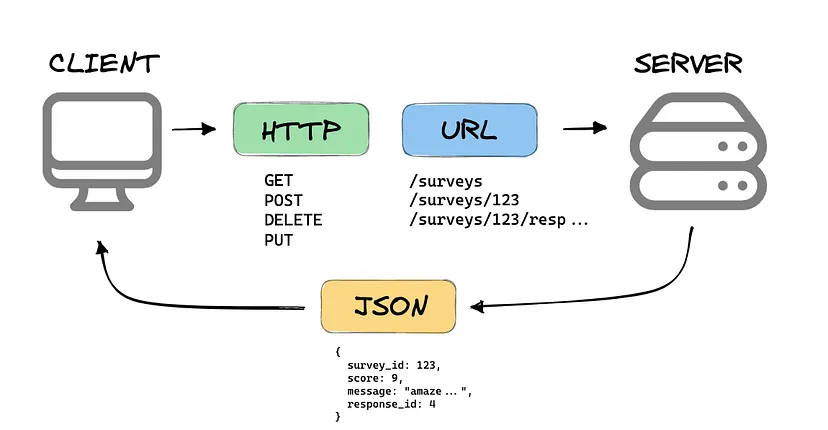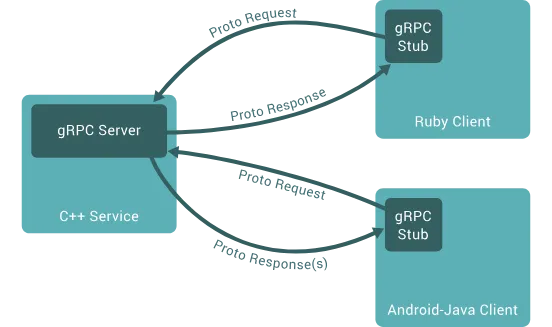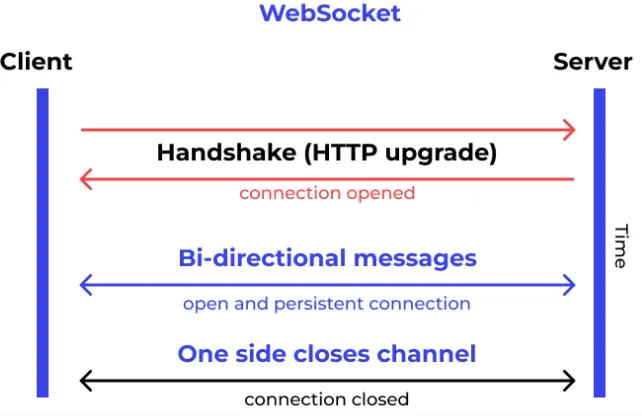When it comes to building modern applications, selecting the right API
communication is crucial for smooth data exchange between different parts of
the system. In this blog, we’ll explore three popular choices: REST API,
gRPC, and WebSocket.
REST API has been widely popular because it offers an easy way to handle
basic data operations and work with different frameworks. In recent times,
gRPC has also gained popularity due to its speed and scalability, making it
an ideal choice for microservices architectures. WebSocket is also popular
for continuous data updates and real-time communication.
Rest API

When to Use
- Use REST for basic data operations (Create, Read, Update, Delete).
-
When you want a stateless API, meaning it doesn’t remember past requests.
- To combine data from multiple sources into a single response.
-
When you want a user-friendly interface to interact with other frameworks
or services.
When to Avoid
-
Avoid using REST for real-time systems that need fast communication, as it
may introduce delays.
-
Handling massive amounts of data and complex analytics are more suitable
for other specialized architectures.
gRPC

When to Use
-
Great for creating fast and scalable systems with quick communication.
-
Works well in back-end systems with many microservices, making
interactions efficient.
-
gRPC is faster than JSON for data transfer due to its use binary
serialization format called Protocol Buffers (protobuf). This makes it
ideal for real-time applications and efficient handling of large amounts
of data.
When to Avoid
-
For applications with limited back-end services, using gRPC may add
unnecessary complexity.
-
In resource-constrained environments like IoT devices, additional overhead
might not be ideal.
-
Interacting with legacy systems that do not support gRPC may cause
integration challenges. In such cases, opting for a widely supported
protocol like HTTP/REST is a better choice.
WebSocket

When to Use
-
Real-Time Chat and Messaging: WebSockets establish a persistent
connection between the client and server, enabling instant message
exchange for a smooth and responsive chatting experience.
-
Live Notifications and Alerts:Provide an efficient solution for
applications requiring real-time notifications or updates to connected
clients.
-
Collaborative Tools and Whiteboards: WebSockets enable multiple
users to collaborate in real-time, with changes instantly reflected on all
connected screens.
-
Financial Trading and Real-Time Analytics: Widely adopted in
financial trading platforms and analytics dashboards, ensuring prompt data
delivery to all connected clients, meeting the demands of these
data-intensive applications.
When to Avoid
-
Your application is simple and doesn’t need real-time updates or
bidirectional communication.
-
You need to support older browsers that don’t fully support WebSockets.
-
Your application doesn’t require frequent communication with the server.
-
Keeping a constant connection open might put a strain on your server’s
resources.
-
You haven’t properly addressed security concerns related to using
WebSockets.





